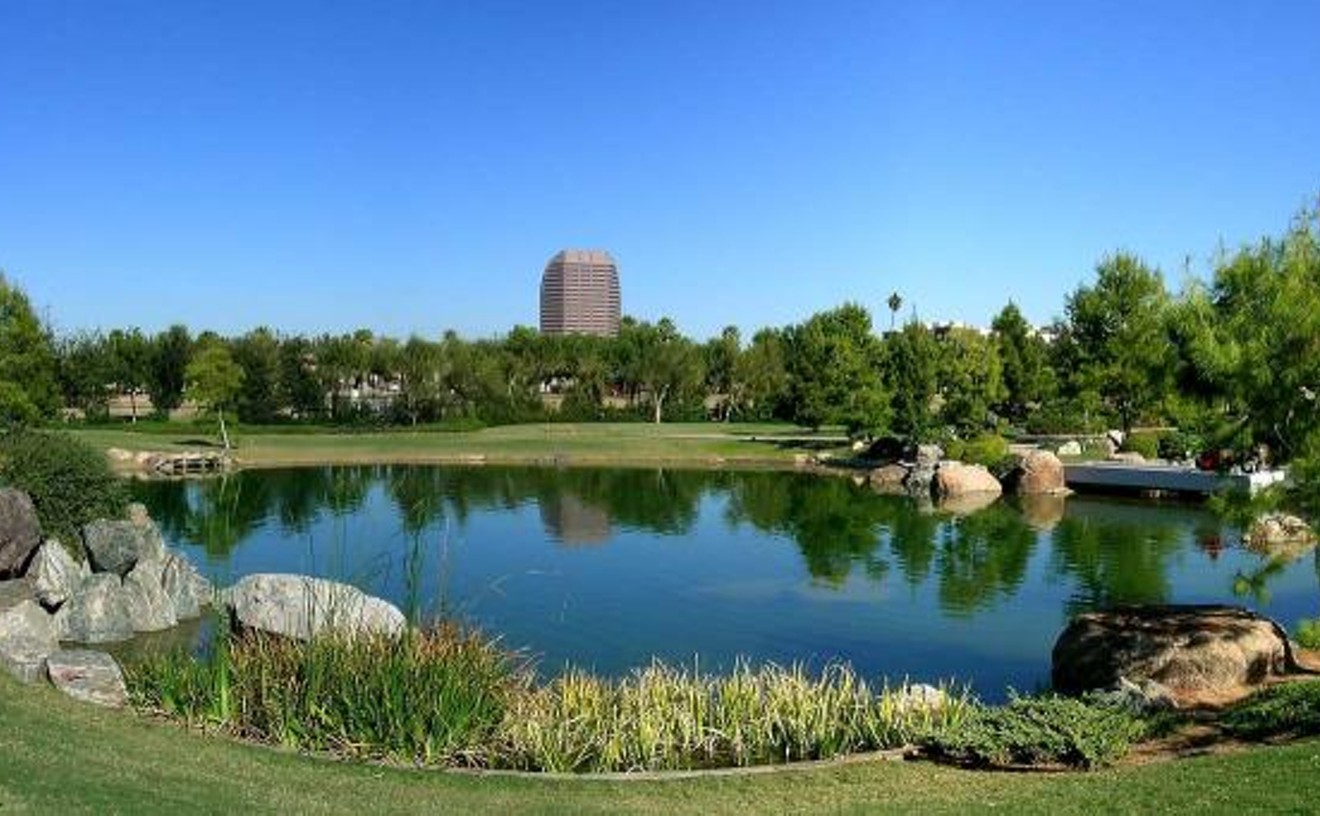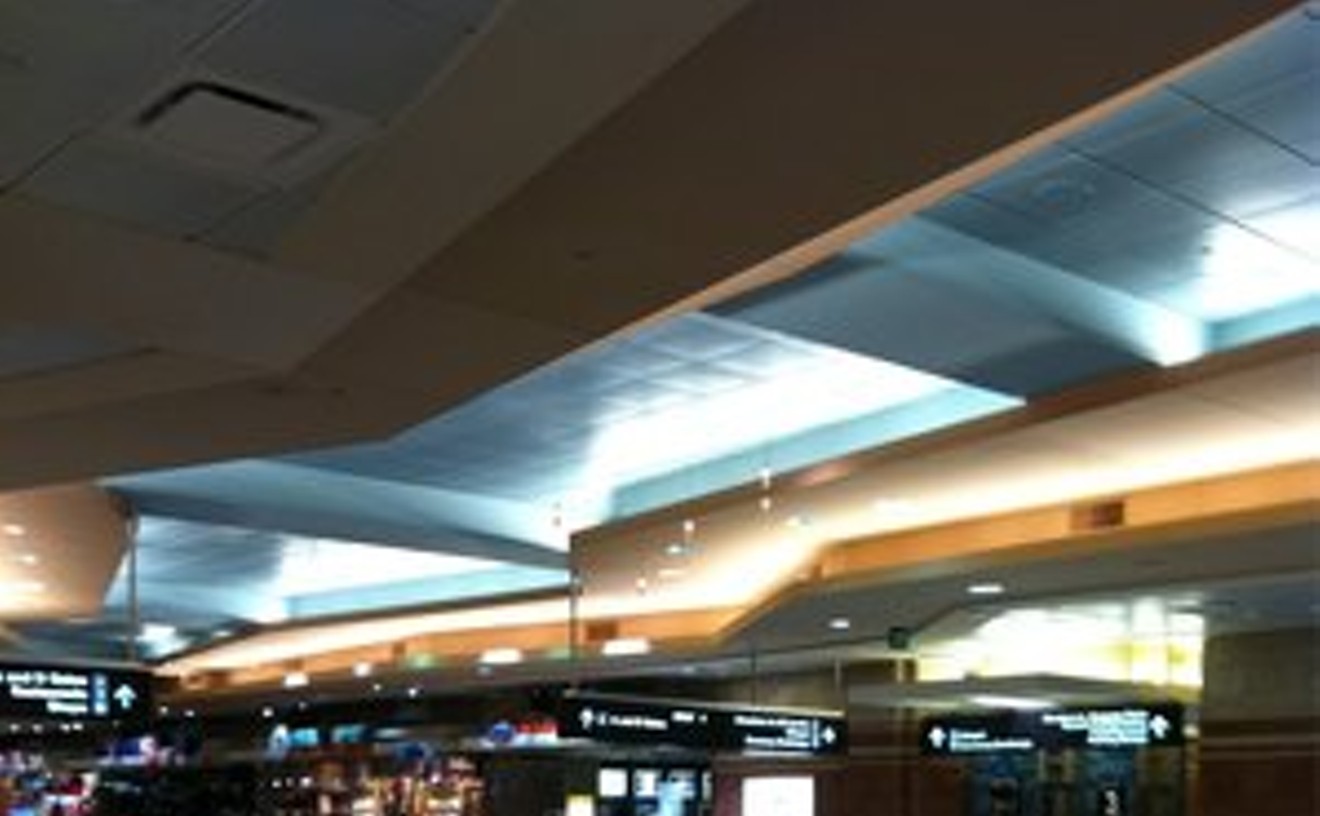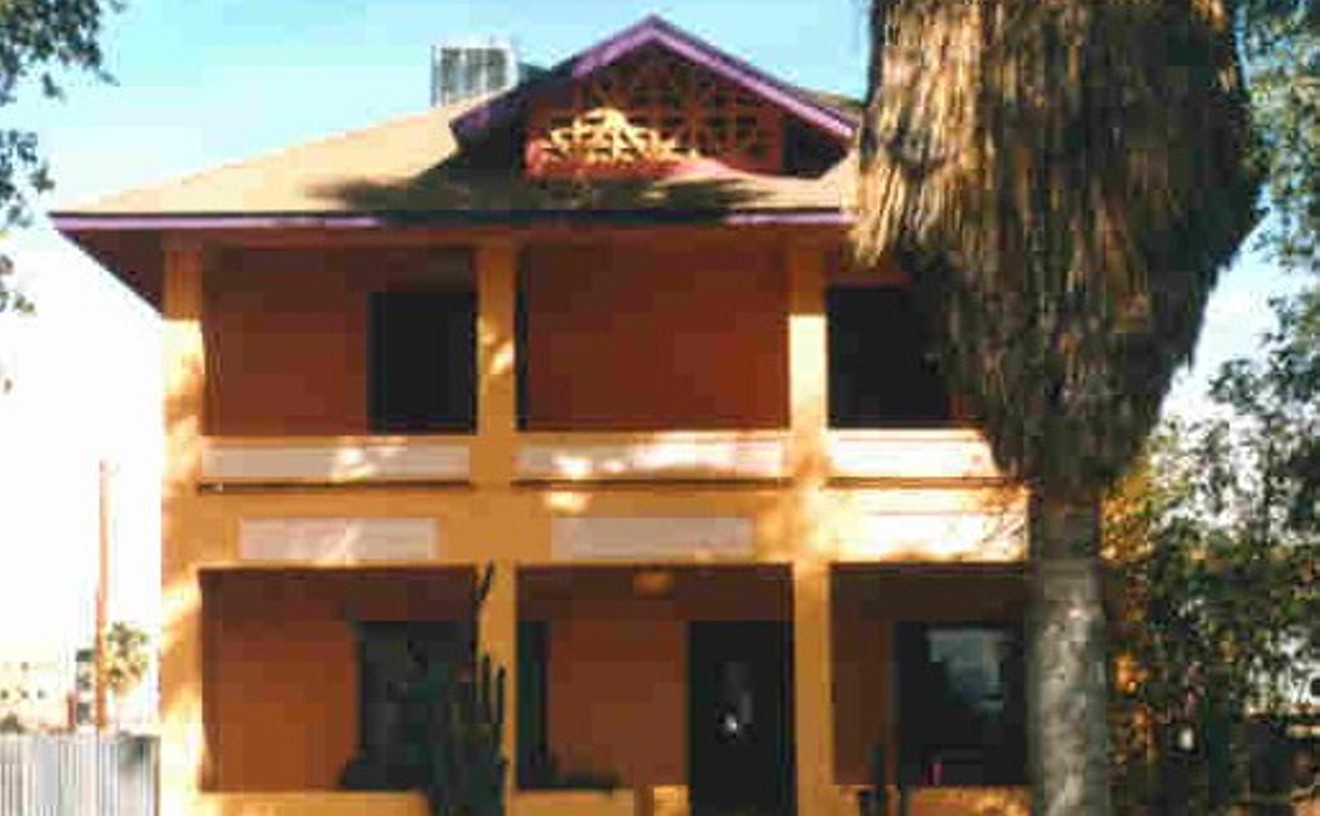When it comes to art with an erotic or esoteric spin, Alwun House is renowned for putting it all out there. At any given time, they might be presenting an art exhibit, a cabaret, or a poetry reading. The multistory house is hard to miss, with its bright orange exterior and seasonal decor such as giant spiders or hearts. But it's really the garden that shines most, in part because not everyone knows it's there. Behind the house, you'll find lush plants, ponds, water features, fairy lights, and art installations. And this garden has features you won't find in most other green spaces, including a fabulous stage and bar area — because sometimes you want to wax poetic amid an idyllic array of blooms, but other times you want to circle a runway filled with exotic fashions knowing that Mother Earth is close by, winking and wearing a sheepish grin.
Best Hidden Oasis
Alwun House Garden
Best Makeout Spot
The Secret Garden at ASU Tempe
Believe it or not, even at Arizona State University's massive Tempe campus lined with palm trees and teeming with backpack-toting undergraduates on skateboards, there is a secluded place where one could have a romantic rendezvous. At the southwest corner of Dixie Gammage Hall (on Forest Mall, across from Coor Hall), meander down a ramp and through a short tunnel to find yourself, and hopefully your companion, at the Secret Garden. A lush green lawn is surrounded by leafy trees and scattered with a few benches, though a picnic blanket is another great seating option here. Stare at your lover in awe or simply head back to escape the hubbub of downtown Tempe. We won't tell if you don't.
- 1001 S. Forest Mall, Tempe, 85281 Map
Best Place to Find Your Zen
Japanese Friendship Garden

Lush greenery, koi fish, and a mini waterfall in the corner of an almost a four-acre garden are unexpected in the desert. But the Japanese Friendship Garden has made its home in the Valley since 1996 when Matsuji Totani, the mayor of Himeji, Japan, proposed a sister-city friendship between Himeji and Phoenix. Several places in the garden offer opportunities for reflection and moments to focus on you. You can stroll the garden and admire the stones or 50 plant varieties on the property. Those who want to sink into an authentic Japanese tea experience will enjoy sipping tea and living an ichigo-ichie moment, which means that the moment you're currently experiencing can never be repeated again. The tea ceremony is meant to be savored because each seating is treated like an experience that is singular and unique. A quiet awareness is palpable when you visit the Japanese Garden and chances are that floating feeling may just mean you found your zen — at least for a few moments.
- 1125 N. Third Ave., Phoenix, 85004 Map
- 602-274-8700
- www.japanesefriendshipgarden.org
Best Bygone Amusement Park
Legend City
If you're an OG resident of metro Phoenix — we're talking several decades or more — you remember Legend City, the bygone amusement park that operated from 1963 to 1983. As for anyone who moved to the Valley since then? They've only heard about the place. Conceived as an Arizona-themed version of Disneyland, the 87-acre destination on the border of Tempe and Phoenix was filled with attractions riffing on our state's history, particularly the Wild West era. There were such themed areas as Indian Country and Boom Town, experiences that allowed you to stroll through the Lost Dutchman Mine or down the "River of Legends," and rides including a circa-1880s locomotive. Since the park's closure, it's become a cultural touchstone for old-school Phoenicians and a part of local lore. Nostalgia for the park rages to this day (a mere mention of the park causes hundreds of responses in the popular Vintage Phoenix group on Facebook), as those who witnessed Legend City firsthand still have halcyon memories of its glory days.
Best Free Ride
PHX Sky Train

It's like something out of Tomorrowland at Disney Word. Sure, the technology isn't all that futuristic. But how many rides give you a bird's-eye view of the top of a jumbo jet? Or the sweeping vistas of the mountains and sunsets that remind us why we live here in the first place? The driverless PHX Sky Train takes you from the 44th Street Light Rail Station, over the taxiway, and right into Terminals 3 and 4. In the summer, the extension to the car rental facility opened. It's free and runs every three to five minutes. It's a great way to avoid the traffic or expensive parking at Sky Harbor, and here's a tip: You can avoid the lines to check your bags at the terminal by doing it at the 44th Street station. You'd pay for this at Tomorrowland. But here's the best bit, besides the views: It's free.
- 3400 Sky Harbor Blvd., Phoenix, 85034 Map
- 602-273-3300
- www.skyharbor.com/
Best Actual Kingdom of Cactuses
The Phoenician Cactus Garden

In some ways, The Phoenician is like the modern-day equivalent of some medieval castle. It's near the base of a mountain in Scottsdale, and it's meant to cater to a particular tax bracket of locals and tourists alike. Luckily, you don't have to breach their walls with force, and everyone can access the whimsy of the resort's cactus garden. This slice of pristine nature isn't just home to 250 or so succulents and cactuses, but also chuckwallas, roadrunners, and other desert creatures. And whether you opt to traipse around yourself, or join the resident horticulturist for a guided tour, visiting the garden is a chance to explore a microcosm of our rich desert. It's a highly cultivated, mostly manufactured desert, but that doesn't mean it's any less compelling. And what better way to understand why people live here — or maybe why you'd want to make the move yourself — than by exploring the understated beauty and downright serenity that comes with accepting and embracing life in the arid Southwest. Plus, when you're done, just go back to the hotel for a swim or a mojito the size of your face.
- 6000 E. Camelback Rd., Scottsdale, 85251 Map
- 480-941-8200
- www.thephoenician.com
Best Cactus Creature
Stanley
The jackalope may be the best-loved mythical desert creature, with its long hare ears and antlers, but artist Christy Puetz has imagined something even more wonderfully weird. For an exhibit at The Gallery at Tempe Center for the Arts, she showed the head and torso of a creature named Stanley with a trio of prickly pear pads forming a crown over its head, almost like a cactus halo suggesting the sanctity of desert wildlife. Her thoughtfully conceived and carefully crafted creature brought a delightful sense of whimsy while also suggesting the importance of respecting the plants and animals in our midst. And it made us want to run right home to see what we might be able to do with a jumbo pack of colorful seed beads.
Best Cactus Map
Phoenix Cactus Map
Unless you've lived here for a lifetime, you probably still don't know the names of all the cactuses growing throughout the city. Nobody's going to quiz you, but if you're going to be an urban desert dweller, you might as well become something of a cactus connoisseur. Artist Jen Urso set out to map the locations of various cactuses growing in the city several years ago, and her latest cactus map shows you where to find more than 50 varieties, which means it's a great way to learn more about the urban desert terrain. The map, which she sells through her website, is a great tool for locals and visitors because it illustrates where to find a particular cactus while also providing basic info about each one. It's a plus that you can't plug the name of a cactus into your GPS and then have it spit out directions, because the whole point of using the map is to reignite your sense of adventure.






